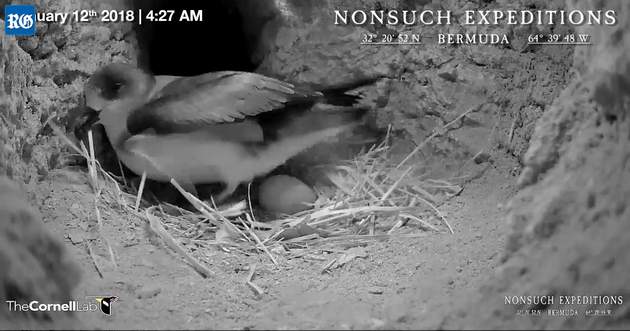Recent News
Zoological Society To Host “Reef Watch” EventWednesday, May 27, 2015
Polar explorer and environmentalist, Robert Swan OBE, once said: “The greatest threat to our planet is the belief that someone else will save it.”
Francis Patton overjoyed with BZS link-up
Wednesday, May 13, 2015
Teachers at Francis Patton are celebrating as they have received some very positive science results after tests sat by their Primary 6 students.
In the land of the lemur
Tuesday, May 12, 2015
Lemurs look cute and fuzzy but being an expert on them is no picnic. Travis Steffens has trekked for miles across hostile terrain in blazing temperatures to find them.
New Tawny Frogmouth Chicks At BAMZ
Friday, May 08, 2015
The Bermuda Aquarium, Museum and Zoo is now playing host to two new inhabitants, a pair of tawny frogmouth chicks born approximately one month ago to parents Kermit and Duane, inhabitants of the Australasia exhibit.
Zoological Society puts accent on history
Monday, April 27, 2015
“Educating tomorrow’s environmentalists,” is the mission of the Bermuda Zoological Society, and while impassioning and empowering students to protect and conserve the environment is important, it is equally important to the BZS to educate adults — especially those who are teaching the next generation. We desire to provide them with the understanding and skills to help them set an example of how to make a difference for our natural world
About
GovernanceAbout Us
Newsletter
Latest News
Gift & Bookstore
Contact
General Inquiries
info@bzs.bm
Latest News
All the latest updates and news from the Bermuda Aquarium, Museum, and Zoo, one of Bermuda's leading visitor attractions!
Owain Johnston-Barnes
Published Jan 15, 2018 at 8:00 am (Updated Jan 15, 2018 at 12:20 am)

This year’s cahow breeding season could be a record breaker, experts predicted yesterday.
Two thirds of the 125 known breeding pairs were nursing eggs by Friday.
And viewers of the CahowCam — a livestream of a nest on breeding site Nonsuch Island — were able to watch one of the endangered birds lay its single egg early yesterday morning.
Jean-Pierre Rouja, team leader of conservation group Nonsuch Expeditions, said the egg was laid at about 4.30am and marked the start of the sixth CahowCam season.
Mr Rouja added that the Bermuda team had signed off at 3am, but their partners from US-based Cornell Lab of Ornithology, who are in Hawaii to install a similar camera to track albatrosses, tweeted the event and alerted Bermuda.
Mr Rouja said that last year, with the support of Cornell, the CahowCam reached 600,000 international viewers who watched a total of 8.5 million minutes of footage.
He added: “As we expand the project, including new ways for our viewers and students to engage, we expect to greatly exceed those numbers this season.”
The same pair of cahows has used the filmed nest since 2009.
Jeremy Maderios, government chief conservation officer, said the pair’s egg last year took 51 days to hatch. Male and female birds take turns to care for the egg.
Mr Madeiros said: “After a record-breaking nesting season last year with 61 chicks fledging out to sea, we seem to be on track for breaking even more records this year.”
The majority of incubating adult cahows he had examined were heavier than normal, with some male birds approaching 500 grams.
Mr Madeiros said that suggested the birds had found good feeding conditions north of the Gulf Stream over the last month.
To watch the livestream, visit Nonsuchisland.com.
Anyone interested in updates on the cahows can also sign up for the Nonsuch Expedition Newsletter and select the CahowCam alert option.


